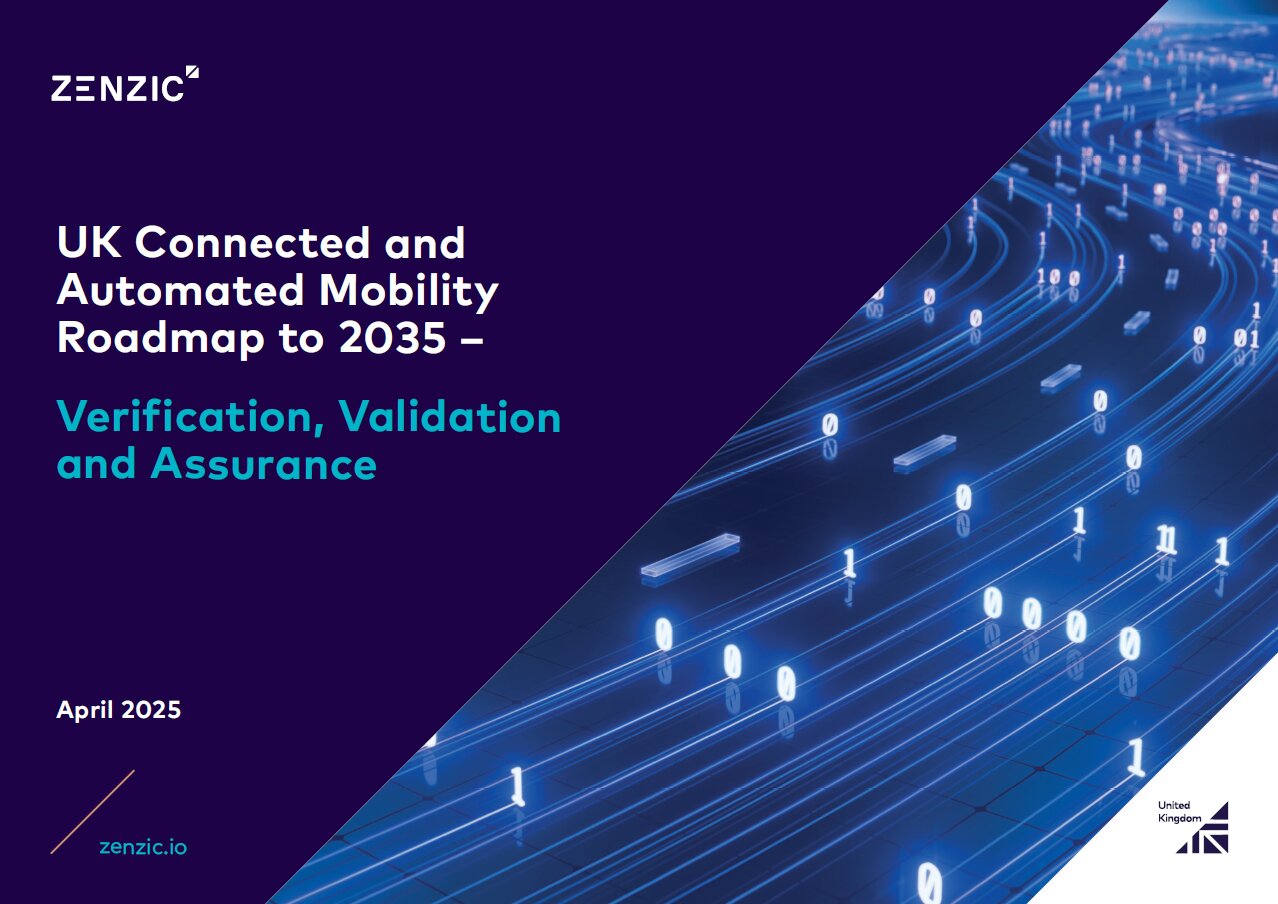As connected and automated mobility (CAM) moves from trial to deployment, the question of trust looms large. Can we assure these systems work safely, reliably and securely—not just in lab tests, but on real roads, in real time?
The updated UK CAM Roadmap to 2035 – Verification, Validation and Assurance (VVA) topic roadmap sets out a practical path forward. It doesn’t just define the mechanics of assurance—it reframes it as a strategic enabler for a future-ready, exportable CAM ecosystem.
Here are five key takeaways from the roadmap.
- CAM assurance must be continuous
Today’s vehicles may pass a type approval test. But tomorrow, that same vehicle could receive an over-the-air (OTA) software update that fundamentally changes how it behaves.
That’s why the roadmap emphasises the shift from static, one-off approvals to whole-life assurance. CAM systems must be verified, validated and assured across their entire lifecycle—from development and deployment, to operation, update, and even decommissioning.
In a future of evolving operating domains and dynamic functionality, assurance can’t be a finish line—it has to be a feedback loop.
- Regulation is evolving – assurance must be ready
The Automated Vehicles Act introduced pivotal new roles such as the Authorised Self-Driving Entity (ASDE) and No-User-in-Charge (NUiC) Operator. These titles come with responsibilities not just for vehicle performance, but for continuous safety and operational oversight.
The roadmap highlights the need for practical, transparent VVA frameworks to support these roles—both for early deployers and long-term service operators. Assurance needs to evolve in tandem with regulation, giving confidence to authorities, insurers, and the public alike.
- Cybersecurity is now core VVA
As CAM systems become more connected, they also become more vulnerable. OTA updates, remote diagnostics, and federated data architectures introduce new attack surfaces—and new assurance requirements.
The roadmap is clear: cybersecurity must be embedded at every stage of the VVA process. It’s not a parallel process or a final checklist—it’s integral to functional safety, system integrity, and public trust.
- It’s not just the vehicle, it’s the system
The roadmap makes a clear point: CAM is a system of systems.
It’s not enough to assure the vehicle in isolation. Assurance frameworks must cover:
- Roadside and digital infrastructure
- Data services (like HD maps and digital twins)
- Real-time connectivity (V2X)
- Interfaces between private operators, public authorities, and regulators
This complexity makes VVA more challenging—but also more vital. The entire ecosystem must work together, and trust must extend across every interface.
- No One Can Deliver CAM Assurance Alone
Assurance is a shared responsibility. The roadmap underlines the need for structured collaboration between regulators, developers, infrastructure owners, insurers, operators and service authorities.
This isn’t just a matter of good practice—it’s essential for scalability. Roles must be clearly defined. Responsibilities must be aligned, communication channels must be both open and trusted across the ecosystem.
Zenzic’s mission to connect stakeholders and align strategy across sectors is key to ensuring that the UK can deliver credible, coordinated assurance frameworks.
Final word
Verification, Validation and Assurance isn’t a technical footnote—it’s a strategic foundation for CAM success. As technologies evolve and regulations mature, assurance will be the common language that connects innovation, industry and infrastructure.
The UK CAM Roadmap offers a bold vision—and now is the time to act on it.
📘 Learn more and download the full VVA topic roadmap here:



